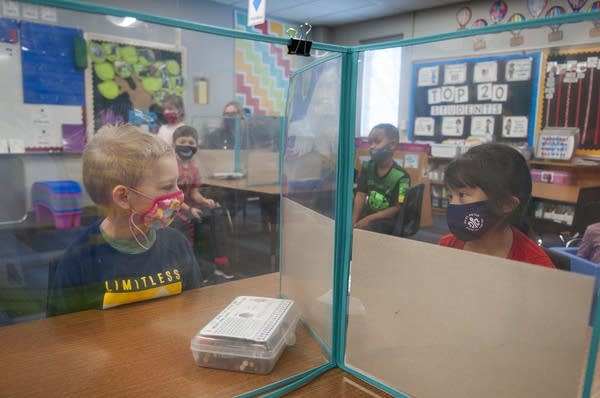Concerned about children and COVID variants? Your questions, answered

Jackson Hulke (left) and Milagros Larios Tulujan look at each other through a plastic divider at their table in their kindergarten class at South Elementary in St. Peter, Minn., in January.
Jackson Forderer for MPR News file
Go Deeper.
Create an account or log in to save stories.
Like this?
Thanks for liking this story! We have added it to a list of your favorite stories.


